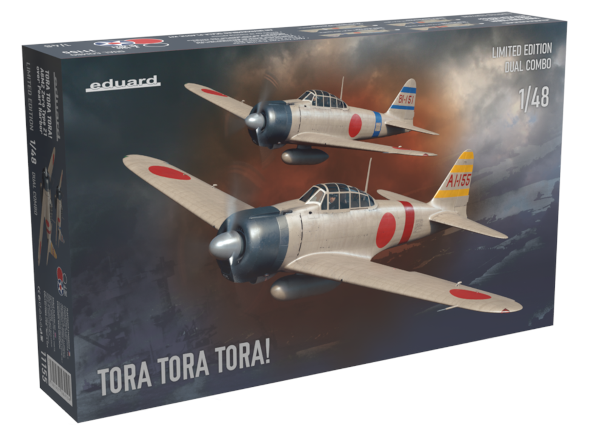
Tora Tora Tora!
By Jacob Russell
The Plane
The Mitsubishi A6M Reisen (Zeke) is certainly one of the most iconic aircraft of World War 2. Powered by the 940hp Sakae 12 radial engine, the A6M2 Model 21 had a top speed of 288 mph, a range of 1,930 miles and was armed with 2 20mm cannons and 2 7.7 mm machine guns. The A6M 2 Model 21 is infamous for its role in the Japanese attack at Pearl Harbor ("The Hawaiian Operation") on December 7, 1941.
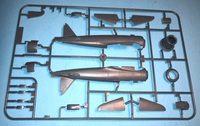
|
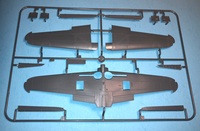
|
The Model
Eduard's Tora, Tora, Tora special edition contains 2 A6M2 Model 21 kits, 1 sets of masks and 2 photo-etch frets. There are 439 parts in total. 336 of these are injection molded plastic and 102 are PE on 2 frets. Many of these parts are pre-painted. The cockpit is one of the highlights of this new A6M2 kit. The level of detail is truly excellent and it resembles the cockpit of Tamiya's 1/32nd scale A6M5: the detail is that good. Fortunately The wheel wells are deep and are made up from a number of individual parts and their detail is great. The landing gear, landing gear doors and wheels look pretty good too.
The fuselage and wing surface detail consists of fine recessed panel lines and rivets as appropriate. The rudder and ailerons are separate moldings and their fabric effect is restrained and convincing. The clear parts are well done. They include the wingtip lights and you have your choice of open or closed canopies.
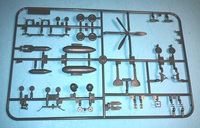
|
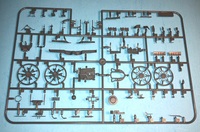
|
The Sakae radial engine is well detailed and only needs a wiring harness to look the part. The photo-etch parts include the instrument panel and side consoles, seat harness, rudder pedals, oleo scissors, etc. Additional items on the fret include the D/F loop, throttle quadrant, cockpit step, etc.
The kit includes 12 different decal options. All 12 A6M2 Model 21s participated in the Pearl Harbor attack, had their cowls painted Mitsubish Blue/Black "Cowling Color") and were painted in overall light gray – Ame-iro J3:
"AI-155", Lt. Cdr. Shigeru Itaya, Akagi Fighter Squadron, first attack wave. This A6M2 had a red fuselage band and 3 yellow bands on the fin and rudder. The spinner was natural metal.
"AII-168", PO2c Akira Yamamoto, Kaga Fighter Squadron, first attack wave. Shigeru Itaya, Akagi Fighter Squadron, first attack wave. This A6M2 had 2 red fuselage bands and 1 red band on the fin and rudder. The spinner was natural metal.
"BI-181", Lt. Masaji Suganami, Soryu Fighter Squadron, first attack wave. This A6M2 had a blue fuselage band and 2 yellow bands on the fin and rudder. The spinner was natural metal.
"BI-112", PO1c Kazuo Muranaka, Hiryu Fighter Squadron, first attack wave. This A6M2 had 2 blue fuselage bands. The spinner was natural metal.
"EI-101", Lt. Tadash Kaneko, Shokaku Fighter Squadron, first attack wave. This Zeke had a white fuselage band and 2 white bands on the fin and rudder and natural metal spinner.
"EII-102", Tetsuzo Iwamoto, Zuikaku Fighter Squadron, patrol during the the first attack wave. This A6M2 had 2 white fuselage bands and 1 white band on the fin and rudder and natural metal spinner.
"AI-102", Lt. Saburo Shindo, Akagi Fighter Squadron, second attack wave. This Zeke had 1 red fuselage bands and 2 yellow bands on the fin and rudder and natural metal spinner.
"AII-109", PO1c Yoshikazu Nagahama, Kaga Fighter Squadron, second attack wave. This A6M2 had 2 red fuselage bands and natural metal spinner.
"BI-151", Lt. Fusata Lida, Soryu Fighter Squadron, second attack wave. This A6M2 had 2 blue bands on the fuselage, fin and rudder and natural metal spinner.
"BI-120", PO1c Shigenori Nishikaichi, Hiryu Fighter Squadron, second attack wave. This A6M2 had 2 blue fuselage bands and natural metal spinner.
"EI-127", PO1c Yukuo Hanzawa, Shokaku Fighter Squadron, patrol during the second attack wave. This A6M2 had 1 white fuselage band and natural metal spinner.
The decals are very well printed with crisp, legible writing, have accurate colors, and there is a separate sheet of stencils.
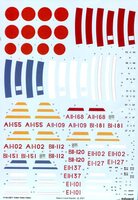
|
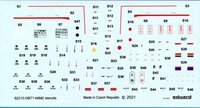
|
The 32 page instruction booklet is well illustrated. It features a brief and concise history of the Imperial Japanese Navy's decsion to attack Pearl Harbor and the development of the Mitsubishi A6M Reisen. The booklet also includes a parts map, color profiles of each aircraft, a stencil placement guide and color callouts for GSI Creos (Gunze) and Mission Models paints.
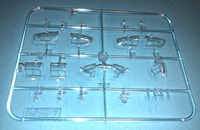
|
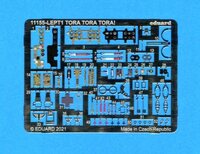
|
Conclusion
Eduard's new Mitsubishi A6M2 is the first in a series of Reisen variants. Hasegawa's A6M2 has had the market to itself for many years, but Eduard's new Reisen is head and shoulders above it. It is accurate and well detailed and it will build into an oustanding model. I recommend Eduard's A6M2 Model 21 kit and I would like to thank Eduard for the review sample.
References
Mitsubishi A6M Reisen Zeke Volume II, by Dariusz Paduch, Kagero Monograph 73, Kagero Publications, 2021
Imperial Japanese Navy Aces 1937-45, by Henry Sakaida, Osprey Aircraft of the Aces 22, Osprey Publications, 1999
A6M Zero in Action, Aircraft Number 59, by Shigeru Nohara, Squadron/Signal Publications, 1983
